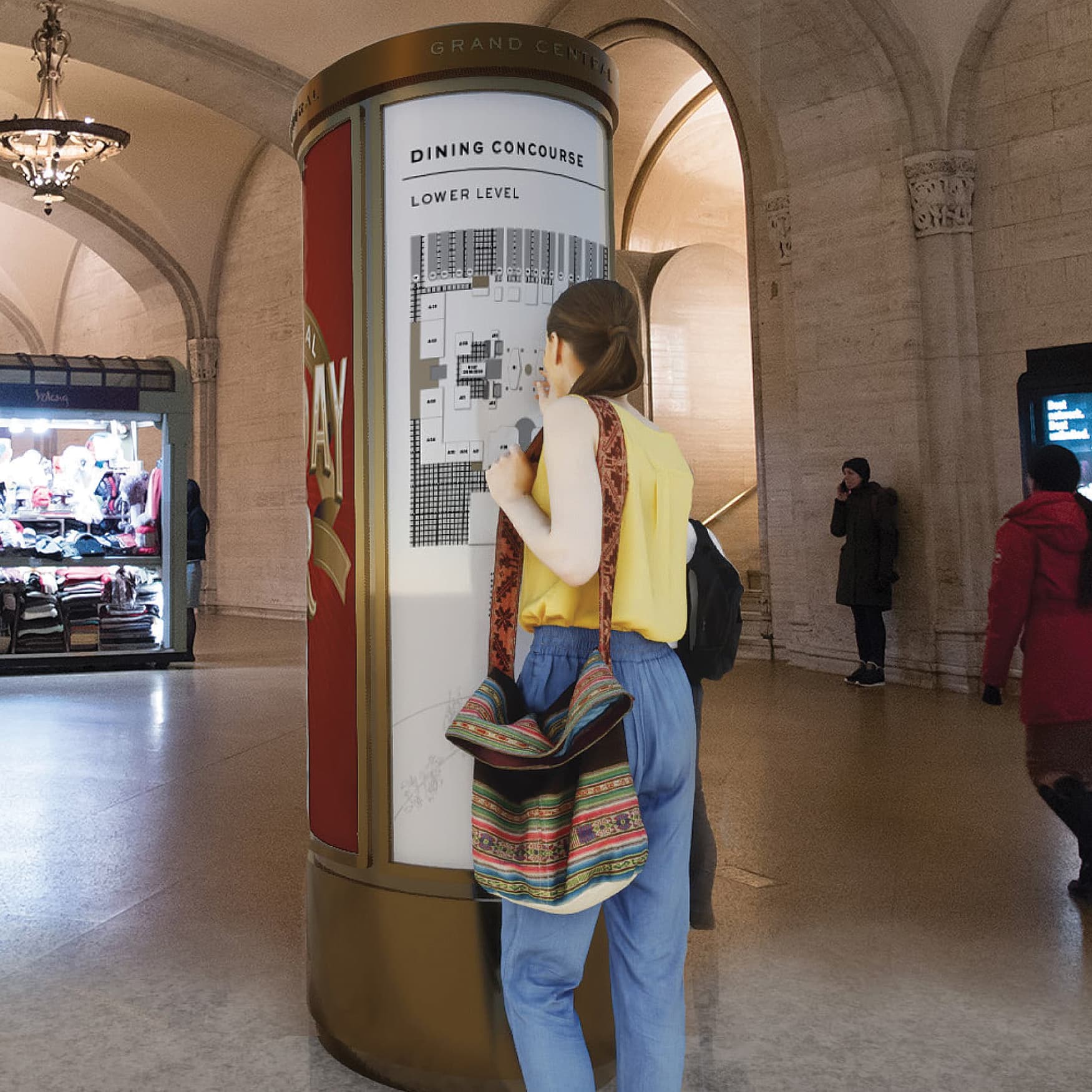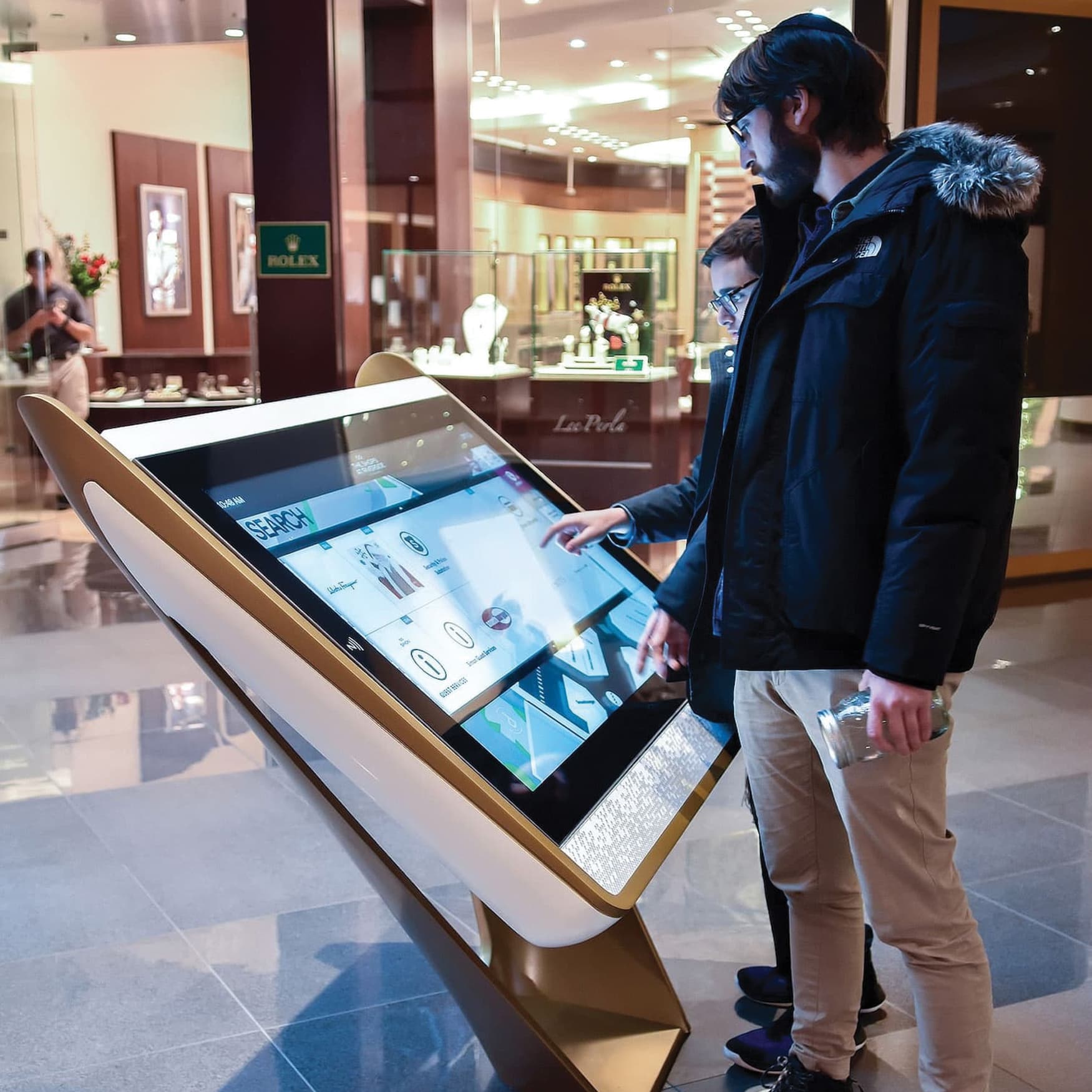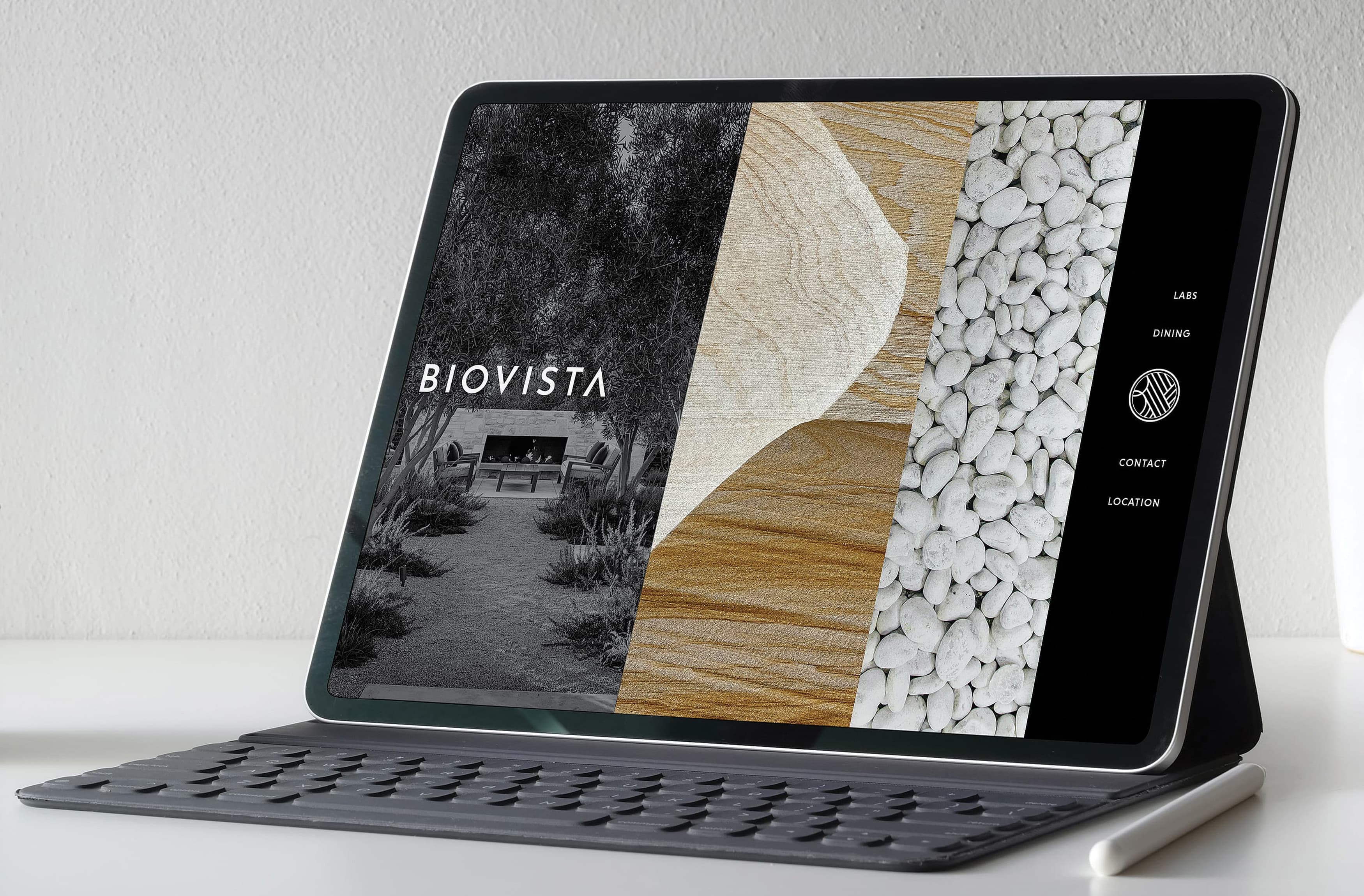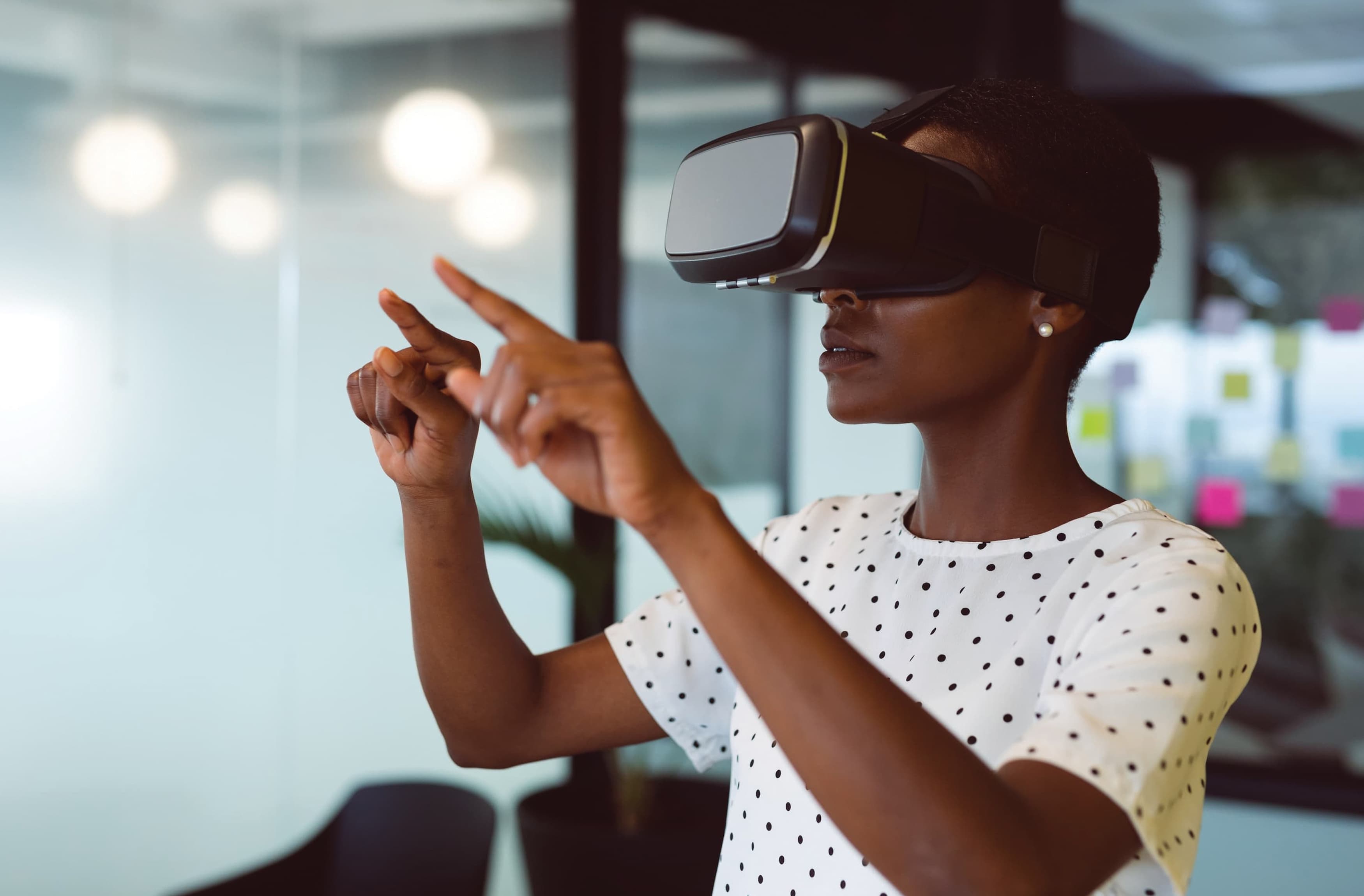June 05, 2024
What Is Digital Wayfinding?

June 05, 2024

Although we are seeing great strides in the application of technology to wayfinding, it is clear today that there is much room for expansion and improvement in this field. What is digital wayfinding exactly, where does it stand today, and where is it heading? With more than 25 years of experience in the industry, we are here to answer these questions, share our knowledge, and guide you on your path.
If you are not sure what wayfinding is, it is necessary to briefly explain this term before defining its digital counterpart. Wayfinding is a system of elements that offer clarity and assistance to users in a built environment. It can include signage, architecture, landscaping, lighting, art, and technology. These different elements work in concert to help people orient themselves in a space and continue navigating through it.
For a more comprehensive explanation of wayfinding, please read our blog post, “What Is Wayfinding?”
So, what is digital wayfinding? Digital wayfinding is wayfinding with a technological component. It encompasses a system of technological elements that offer clarity and assistance to users in a physical or digital environment. Examples include interactive maps, digital directories, and smart lighting.
As technology advances, there are continually more opportunities to enhance and expand digital wayfinding. Three industries in particular are leading the charge: transportation, retail, and healthcare.

Wayfinding signage created by RSM Design for Grand Central Terminal in New York City.
The emergence of the smartphone and the Global Positioning System (GPS) have put powerful wayfinding tools into the hands of many users. Companies like Google and Apple have given us incredibly informative maps and images for use in navigation.
In vehicular wayfinding, these tools are very competent. You can enter a destination in an app like WAZE and seconds later be given a choice of routes and an estimated time of arrival, or better known as “ETA.” The technology updates in real time, making route and ETA adjustments on the fly.
What was once a process of using a printed map, knowledge of past experiences, and a series of educated guesses has been replaced by the Certainty brought on by technology. In the past, the most stressful part of vehicular wayfinding was the unknown: What time will I arrive? Will an issue arise causing a delay? Today, digital wayfinding solutions have alleviated that fear, stress, and uncertainty.
Airports, train stations, and bus terminals likewise leverage digital wayfinding to their advantage. Dynamic digital signage shows departures, arrivals, delays, gate changes, and other important notices and information in real time. Smartphone integrations can update digital boarding passes and tickets accordingly. These advances in wayfinding similarly provide greater Certainty in the transit industry, which also improves traffic flow and decreases congestion.

Digital touchscreen directory created by RSM Design for The Shops at Riverside in Hackensack, New Jersey.
In the retail environment, digital wayfinding has transformed the shopping experience for many users. The most ubiquitous and complex are digitized directories.
In the past, mall directories typically consisted of a stationary map that marked its own location, stores, facilities, and landmarks to help guide shoppers. Today, these directories are interactive, allowing them to contain significantly more information that is updated in real time. By the touch of a finger, shoppers can search for stores or amenities, pull up additional information about their hours of operation, and see the latest information about store promotions or events.
At RSM Design, we incorporated digital signage into Manhattan Village, an interactive yet sophisticated retail center. The digital screens update in real time to show users upcoming events with key details and QR codes to scan for more information.
In some retail environments, visitors can use their smartphones to get real-time navigation to specific stores or products. Certain smartphone apps also offer personalized shopping guides to help users navigate as they shop.
Such advancements benefit companies and consumers alike. Shoppers enjoy a more streamlined, interactive, and engaging experience, while stores are able to leverage customer data and market to them more strategically.

A mockup of the website for Biovista, who RSM Design provided with branding, logo design, naming, and wayfinding signage.
In the healthcare sector, digital wayfinding is a helpful addition to traditional wayfinding in helping users orient themselves and navigate within large medical campuses. These technologies enable patients, visitors, and even healthcare professionals to access up-to-date information and directions.
Many hospitals and healthcare facilities have adopted interactive kiosks and displays, usually stationed at the entrance to attract users at the start of their journey. Patients and visitors can look up their appointments and destinations. They may be able to look at maps or see directions and landmarks to guide them where they need to go. Smartphone apps can continue this wayfinding assistance, giving users ongoing navigation and real-time updates on appointments.
These digital wayfinding systems bring with them numerous benefits. For patients, they can mitigate some of the anxiety associated with hospital visits, providing Certainty around the navigational portion of their visit if nothing else. For healthcare providers, technology can streamline patient flow and facility management, freeing up staff to focus on other tasks.
Wayfinding is a critical part of our everyday modern experience. In built environments, layers of wayfinding systems occur simultaneously—sometimes overlapping, and at other times leaving big, frustrating gaps. Digital wayfinding is uniquely poised to fill those gaps as we find new ways to leverage technology to support user experiences.
But first, many architects and designers must shift their view on wayfinding as a whole. At RSM Design, we believe that how we see the problem is the problem. While many people use the terms “wayfinding” and “signage” interchangeably, wayfinding systems are actually aggregates of architecture, lighting, landscape, art, and, yes, signage systems.
By opening ourselves to these additional avenues of digital wayfinding, we can seek clear, compelling, and creative technological solutions to even the biggest design challenges. The consistent cues identified by Kevin Lynch as the lifeblood of wayfinding can be planned and designed into many aspects of the environment. Today’s environments that rely on signage alone for wayfinding are bypassing many of the most effective wayfinding tools available.
The environments in which we find ourselves are communicating on many levels. As wayfinders, we have learned to filter the cues from the environment—to listen to the architecture, the landscape, the lighting, and the sign systems. We have learned to see the relationships between these elements and to understand their cumulative message.
As digital wayfinding design evolves further and becomes more intentionally woven into the environment, we may actually begin to see traditional wayfinding cues—the signage system—become less significant as other features begin to take on more responsibility.

As in many other industries, virtual and augmented reality offer promising developments in digital wayfinding, though they have yet to find much success or widespread adoption.
For instance, we have seen prototype examples of wayfinding information layered onto live images of the built environment. The observer is led, in real time, through a sequence of decision points along the path to a destination. Real, working examples of this type of technology are difficult to find, however.
The implementation of these systems presents project teams with major obstacles to overcome in both planning and cost. The foundation required for this type of system lies outside the boundaries of most real estate development projects. Software development is seldom budgeted for in the beginning stages of a project, and the long-term maintenance of these types of systems creates uncertainty in financial planning. Additionally, software designers are not likely to be part of the architectural project team, which creates more uncertainty.
But here too, as with digital maps and smartphone navigation, Google is making an impact. Google’s Indoor Maps present the opportunity for owners to partner with Google in creating maps and diagrams for the indoor environment. In this case, an existing facility is able to get over the technology gap through its partnership with Google, which eliminates many of the uncertainties in both implementation and maintenance.
The idea is that people should feel empowered by the spaces they occupy. So, how does the designer invigorate the environment to make it more engaging and create the kinds of connections that surpass the physical? By placing people at the center of the design process.
Today, many people expect digital integrations that improve their experiences. But not all users feel comfortable relying on technology, which is why many of the strongest wayfinding solutions combine both traditional signage and digital solutions.
Will we see the traditional signage system fall away as the digital solution gains more traction—both in implementation and adoption? How, where, and why will the next revolution in wayfinding take place? Three sectors seem likely to incubate the movement: retail, healthcare, and transportation.
Retail brings the promise of sponsorship dollars, which addresses the issue of cost in the development of digital solutions. The healthcare sector is undergoing rapid expansion as the baby boomers arrive in their golden years. But will they, as a group, value the addition of digital wayfinding solutions? This remains to be seen.
Will transportation give us the next big leap in digital wayfinding? In the past, transportation has pushed the boundaries of wayfinding. However, the pollination of government and digital solutions rarely yields optimal results.
It seems highly likely that digital solutions for wayfinding will become more ubiquitous over time. The questions lie in how and when.
At RSM Design, we take pride in partnering with our clients to discover creative, elegant solutions together. With award-winning and innovative design work, we strive to improve the quality of life and well-being for the people and places we work with. Contact us today to start a conversation about finding the right wayfinding solutions and digital integrations for your unique environment.